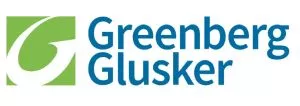- in United States
- within Law Department Performance, Insolvency/Bankruptcy/Re-Structuring and Energy and Natural Resources topic(s)
- in United States
Beginning July 1, 2024, the "Honest Pricing Law" or "Hidden Fees Statute," California's SB 478, was enacted. It prohibits "advertising a price that is less than the actual price that a consumer will have to pay for a good or service." In particular, it bans "advertising, displaying, or offering a price for a good or service that does not include all mandatory fees or charges other than" taxes or shipping. While the statute does not expressly include or exclude restaurants, it facially would apply to service charges by restaurants and other consumer-facing businesses. This law was originally set to take effect on July 1, 2024.
In response to concerns from the restaurant industry, SB 1524 provides an exemption from SB 478 for "a mandatory fee or charge for individual food or beverage items sold directly to a customer by a restaurant, bar, food concession, grocery store, or grocery delivery service." However, this exemption comes with a condition: to be exempt under SB 1524, the fee must be "clearly and conspicuously displayed, with an explanation of its purpose, on any advertisement, menu, or other display that contains the price of the food or beverage item...." Importantly, this exemption takes effect immediately. Looking ahead, starting July 1, 2025, the "clear and conspicuous explanation" must meet the formatting requirements of Civil Code section 1791(u), which are: "a larger type than the surrounding text, or in a contrasting type, font, or color to the surrounding text of the same size, or set off from the surrounding text of the same size by symbols or other marks, in a manner that clearly calls attention to the language."
In summary, as of today, restaurants are exempt from the drip pricing ban provided that they clearly and conspicuously disclose service charges and their purpose. However, starting July 1, 2025, restaurants must also meet the font and disclosure requirements set forth in Civil Code section 1791(u).
Compliance Issues
As a new law, there is not a lot of interpretive case law. Ambiguities include:
- What does "clear and conspicuous" mean in the period between now and June 30, 2025?
- How specific does a disclosure of the purpose of a charge need to be? Is "health care" sufficient, or is a more general statement such as "employee benefits" acceptable? Or does the business need to be even more specific.
- For electronic menus, what does it mean for a disclosure to be on the display that contains the price of the food? Is a pop-up and affirmative consent required? Is a link to the disclosures sufficient?
Given these ambiguities, businesses are encouraged to take proactive steps. Even though the "clear and conspicuous" definition from Civil Code section 1791 isn't formally required until July 1, 2025, consider it a safe harbor and aim to achieve compliance with it as soon as possible. While a lower standard may be legal for a short time, complying with the statute will avoid gray areas that can lead to litigation.
In addition, businesses should aim for moderate specificity in the purpose of a charge. It is advisable to avoid generic terms such as "service fee" or "employee benefits," and instead aim for a more specific disclosure.
Finally, for electronic ordering, businesses should structure the process such that it is provable that a customer saw (or would have seen had they been looking) the disclosure. Links that don't require an affirmative consent are very risky.
Consumer Legal Remedies Act (CLRA) Litigation
The drip fees ban is part of the Consumer Legal Remedies Act (CLRA). To seek damages under the CLRA, one must give the defendant 30 days to rectify the violation and make the consumer whole. This 30-day period is useful to investigate and respond to a claim, but it is often not easy for a company to defeat a claim by curing the alleged defect. If the claim is on behalf of a class, the business must provide a fix to the entire class, which is often impossible. Moreover, CLRA claims are also often combined with other claims that can go forward even if the CLRA claim for damages is mooted. Because of this, if you receive a 30-day letter, it's critical to get counsel engaged, because that early period, before either side has spent a lot on legal fees, is the best opportunity to get an efficient settlement if the business desires one. In fact, most businesses choose to settle CLRA claims early because they can be very dangerous if a class is certified.
If litigation goes forward, there are a number of legal, factual, and procedural defenses, including:
- Most obviously, compliance with the CLRA;
- Lack of damages/reliance;
- Non-certifiable class; and
- Class action waiver in terms of service.
Risk Mitigation
To reduce exposure, businesses should be wary of mixing class action waivers with arbitration provisions. Mass arbitrations with a service like AAA can be incredibly expensive, because 10,000 claims can be filed at once, each with a $1,400+ filing fee for the business. Therefore, if you have both an arbitration provision and a class waiver, pay close attention to the rules and fees of the arbitration service you pick, and consider providing for batching.
While important, CLRA claims are not the most common consumer claim for most food and beverage businesses. For example, food and beverage companies are more likely to be targeted for internet accessibility/privacy issues or ADA claims. Thus, it is wise to have a holistic strategy for mitigating the risk of consumer claims that includes CLRA claims, but is not limited to them.
The content of this article is intended to provide a general guide to the subject matter. Specialist advice should be sought about your specific circumstances.


